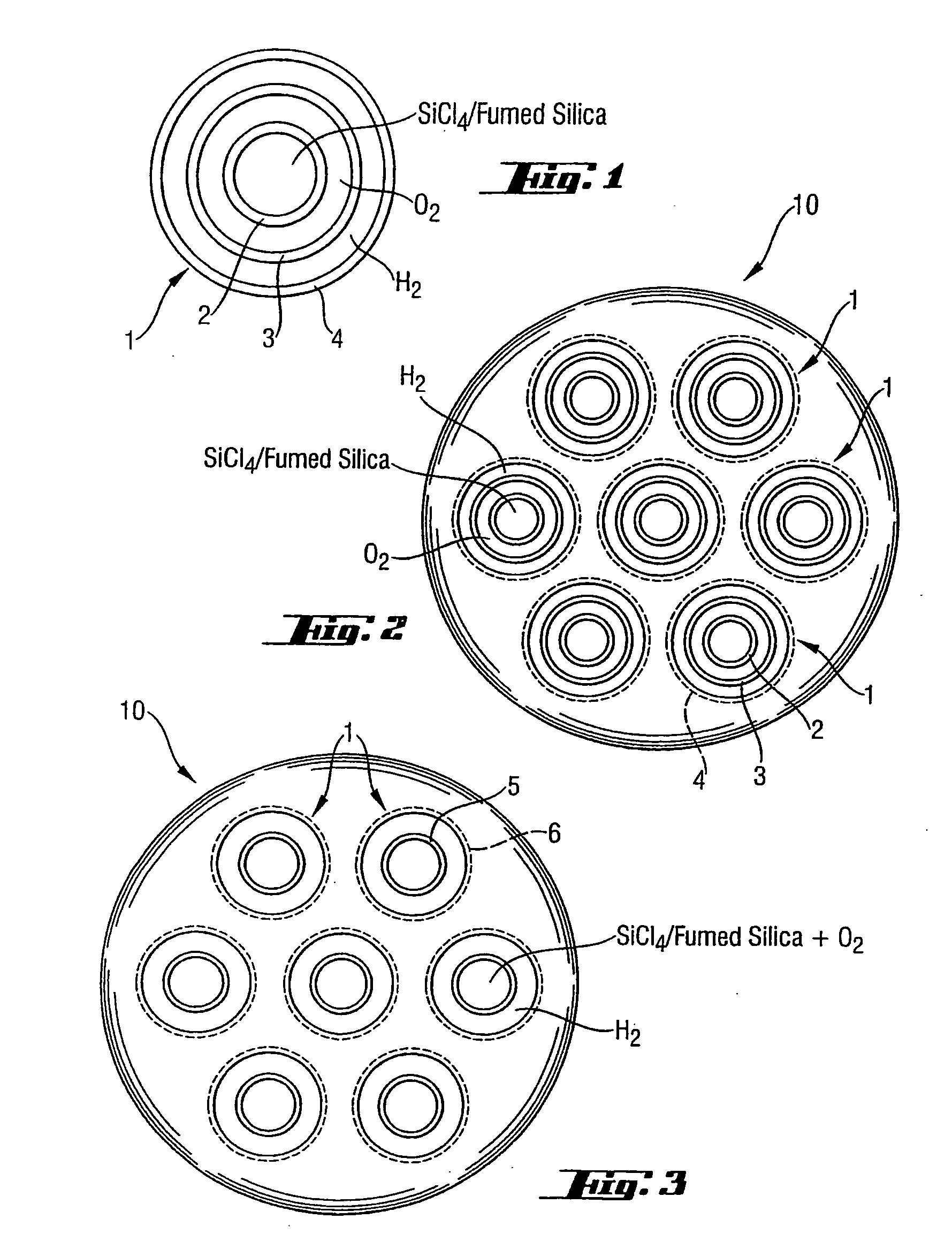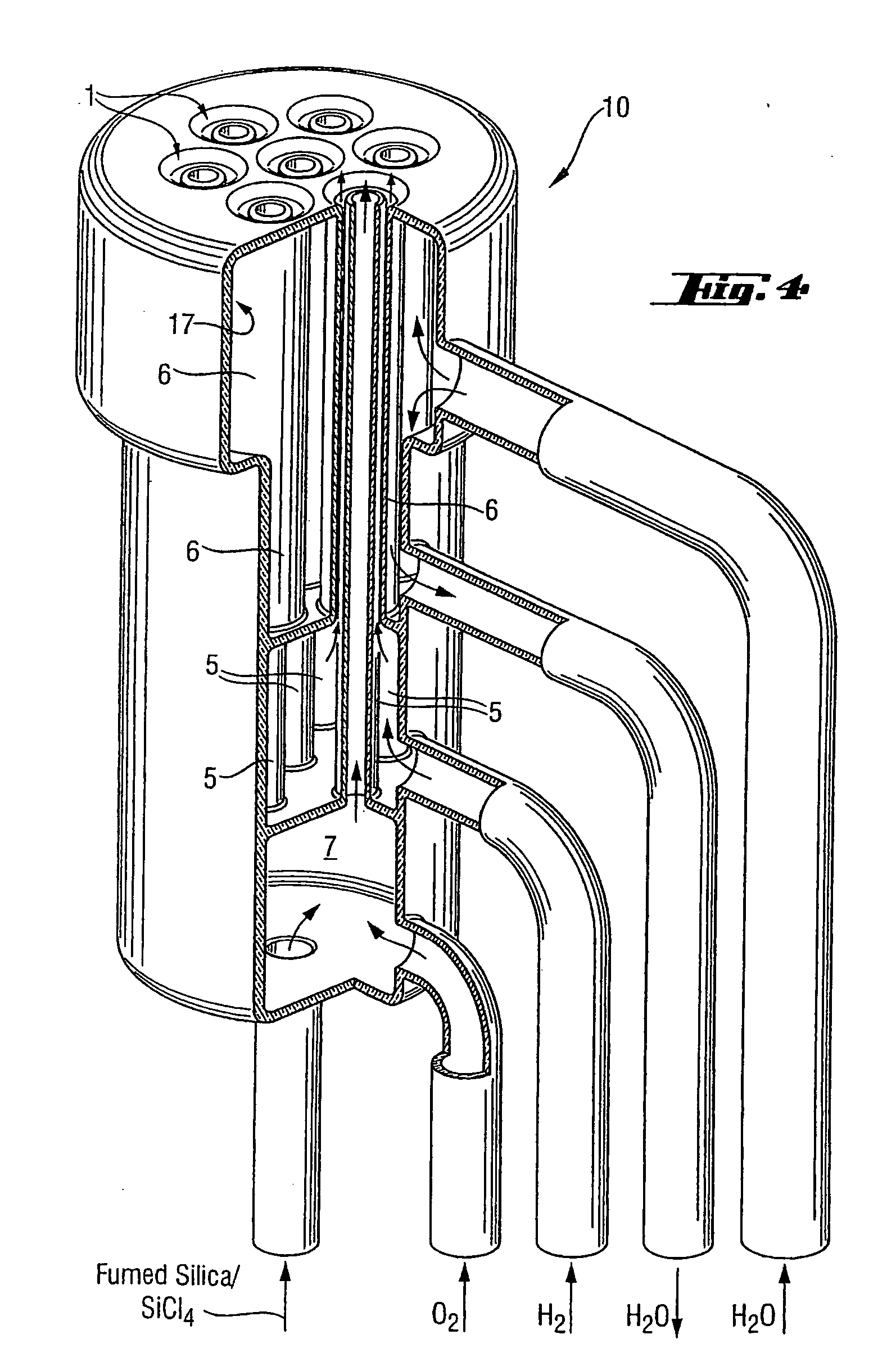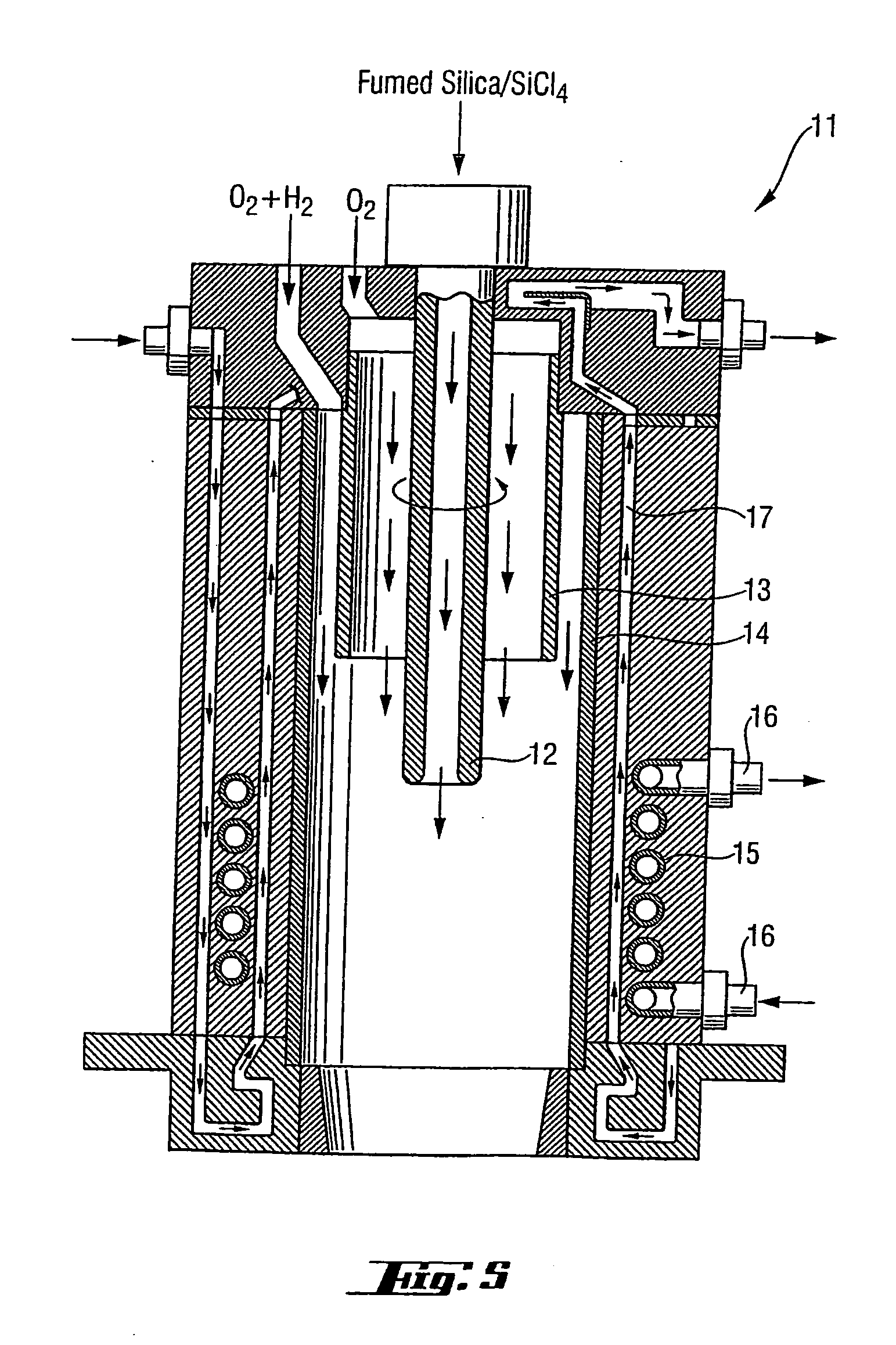High-purity silica powder, and process and apparatus for producing it
a technology of high-purity silica and process, applied in silicon compounds, glass deposition burners, manufacturing tools, etc., can solve the problems of reduced pulling time, poor flow properties of bubble-containing imperfect spherical particles, and process limitations, and achieve high purity
- Summary
- Abstract
- Description
- Claims
- Application Information
AI Technical Summary
Problems solved by technology
Method used
Image
Examples
example 1
Production of a Fumed Silica Powder from SiCl4 by Means of an Oxyhydrogen Flame without Clean Room Conditions
[0065] To produce a fumed silica powder from SiCl4, the reactants SiCl4, O2 and H2 are passed into the combustion chamber by means of a quartz glass nozzle without premixing. The reaction is carried out using 16.6 g / min of SiCl4+6.3 l / min of O2+8.9 l / min of H2. The combustion chamber is operated at a pressure of 20 mbar above atmospheric pressure. Table 1 shows the analytical results.
example 2
Production of a Fumed Silica Powder from SiCl4 by Means of an Oxyhydrogen Flame using Clean Room Conditions
[0066] To produce a fumed silica powder from SiCl4, the reactants SiCl4, O2 and H2 are passed into the combustion chamber by means of a quartz glass nozzle without premixing. The reaction is carried out using 16.6 g / min of SiCl4+6.3 l / min of O2+8.9 l / min of H2. The entire installation is in a clean room belonging to clean room class 10,000. Table 1 shows the analytical results.
example 3
Production of a Fused Silica Powder from a Fumed Silica Powder by Means of an Oxyhydrogen Flame without Clean Room Conditions
[0067] To produce fused silica powder from fumed silica powder, the reactants fumed silica, O2 and H2 are passed into the combustion chamber by means of a quartz glass nozzle without premixing. The reaction is carried out using 180 l / min of H2+90 l / min of O2+60.3 g / min of fumed silica powder. The combustion chamber is operated at a pressure of 40 mbar above atmospheric pressure. Table 1 shows the analytical results.
PUM
| Property | Measurement | Unit |
|---|---|---|
| mean particle size | aaaaa | aaaaa |
| mean particle size | aaaaa | aaaaa |
| pressure | aaaaa | aaaaa |
Abstract
Description
Claims
Application Information
 Login to View More
Login to View More - R&D
- Intellectual Property
- Life Sciences
- Materials
- Tech Scout
- Unparalleled Data Quality
- Higher Quality Content
- 60% Fewer Hallucinations
Browse by: Latest US Patents, China's latest patents, Technical Efficacy Thesaurus, Application Domain, Technology Topic, Popular Technical Reports.
© 2025 PatSnap. All rights reserved.Legal|Privacy policy|Modern Slavery Act Transparency Statement|Sitemap|About US| Contact US: help@patsnap.com



